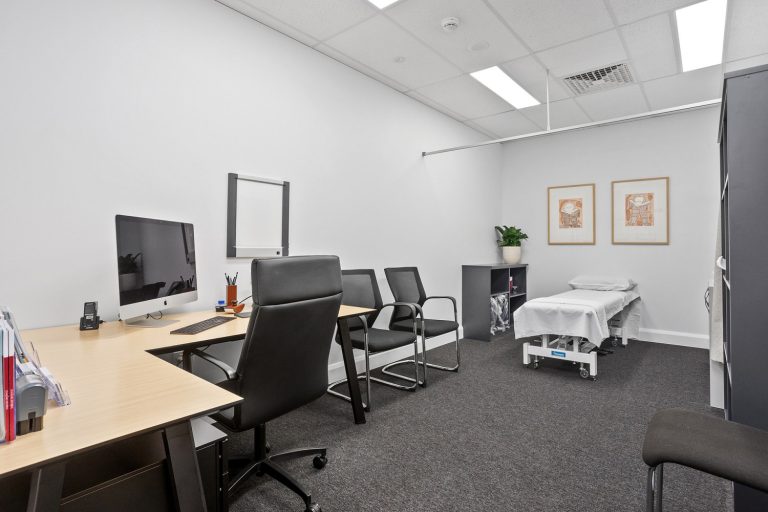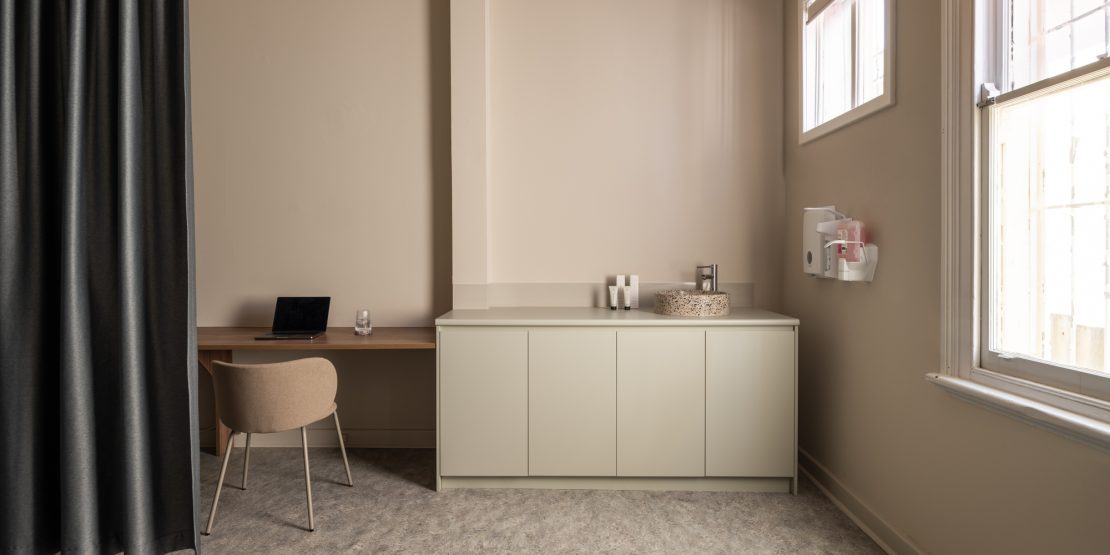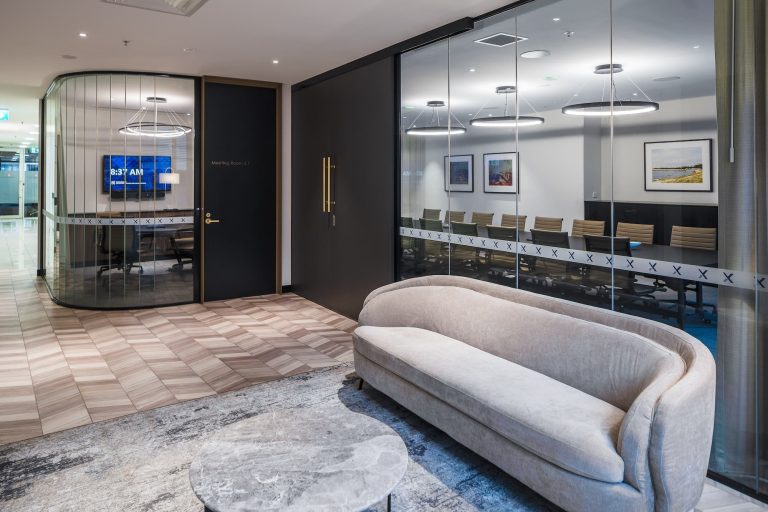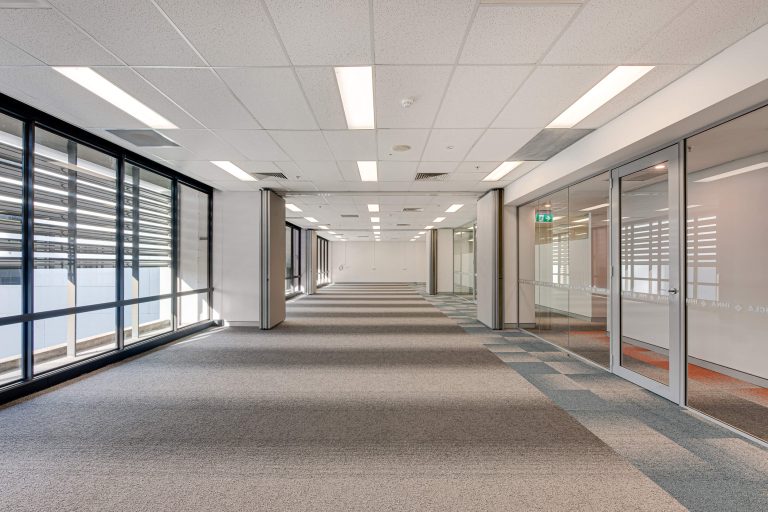Offices are not just a place of work; they are an environment where employees spend the majority of their day. As such, creating a comfortable and supportive workspace is key to promoting employee health, well-being, and productivity. One of the critical components of a comprehensive workspace is ergonomics. In this article, we explore the importance of ergonomics in Perth office fitouts.
Understanding Ergonomics and Its Role in Office Fitouts
Ergonomics is a scientific discipline that studies the interaction between people and their environment. It aims to design workplaces that are comfortable, efficient, and safe, reducing the risk of injury and discomfort.
Defining Ergonomics
The term ergonomics comes from the Greek words “ergon” (work) and “nomos” (rules or laws). Ergonomics studies how people interact with their working environment and how to optimize that interaction. It covers everything from the design of office chairs to the layout of desks, and even the lighting in the room.
The Science Behind Ergonomics
Ergonomic design takes into account body measurements, the physical demands of tasks, and the characteristics of the environment. It uses this information to develop solutions that meet the needs of the users, putting efficiency, safety, and comfort at the forefront of the design process.
Key Ergonomic Principles for Office Spaces
There are several key principles of ergonomics that apply to office spaces, including:
- The importance of proper posture and neutral positioning
- The necessity of frequent movement throughout the workday
- Maintaining a safe and comfortable temperature in the office
- The need for adequate lighting and glare reduction to reduce eye strain
Proper posture and neutral positioning are critical to reducing the risk of musculoskeletal disorders. This means that office chairs should have adjustable heights and backrests to support the natural curve of the spine. The desk should also be at a height that allows the user to maintain a neutral position, with their arms and wrists straight and their feet flat on the floor.
In addition to proper posture, frequent movement throughout the workday is essential to maintaining good health. This can be achieved through the use of sit-stand desks or by taking regular breaks to stretch and move around. Employers can also encourage physical activity by providing on-site exercise facilities or organizing walking meetings.
The temperature in the office should be maintained at a comfortable level, typically between 68 and 76 degrees Fahrenheit. This can be achieved through the use of heating and cooling systems, as well as proper insulation and ventilation. A comfortable temperature helps to reduce fatigue and improve productivity.
Finally, adequate lighting and glare reduction are critical to reducing eye strain. Natural light is ideal, but when that is not possible, artificial lighting should be used to mimic natural light as closely as possible. Glare can be reduced through the use of blinds or curtains, or by positioning the computer monitor away from windows or bright lights.
In conclusion, ergonomics plays a critical role in office fitouts. By designing workplaces that are comfortable, efficient, and safe, employers can reduce the risk of injury and discomfort, while improving productivity and employee satisfaction.
The Benefits of Ergonomic Office Fitouts in Perth
Integrating ergonomic principles into office fitouts can lead to significant benefits for both employers and employees in Perth. Ergonomic design is about creating a workspace that is comfortable, efficient, and safe for employees to work in. By taking into account the needs of employees, businesses can create a workspace that promotes health, well-being, and productivity.
Improved Employee Health and Well-being
People who work in ergonomically designed environments are less likely to experience physical discomfort and long-term health issues such as back pain, carpal tunnel syndrome, and repetitive strain injuries. Ergonomic office fitouts can help reduce the risk of these injuries by providing employees with the right tools and equipment to work comfortably and efficiently. This, in turn, can lead to improved employee morale, reduced absenteeism, and lower healthcare costs.
For example, ergonomic chairs can help reduce the risk of back pain by providing support to the spine, while adjustable desks can help reduce the risk of carpal tunnel syndrome by allowing employees to work at the correct height for their body.
Enhanced Productivity and Efficiency
Ergonomic design reduces the physical demands of work, making it easier for employees to focus on their tasks. With the right tools and equipment, workers can perform at their best utilizing their skills and knowledge. This leads to a higher rate of task completion and overall productivity.
For example, an ergonomic keyboard can help reduce the risk of repetitive strain injuries by allowing employees to type comfortably, while an adjustable monitor can help reduce eye strain by allowing employees to work at the correct height and distance from their screen.
Reduced Workplace Injuries and Associated Costs
Workplace injuries can have a significant impact on businesses in Perth, from lost productivity to increased workers’ compensation costs. Ergonomic office fitouts can help reduce the risk of injuries related to poor posture, repetitive strain, and other work-related illnesses.
For example, ergonomic office fitouts can include anti-fatigue mats to reduce the risk of slips, trips, and falls, while ergonomic keyboards and mice can help reduce the risk of repetitive strain injuries.
Increased Employee Satisfaction and Retention
Employees who feel valued and supported by their employer are more likely to be satisfied with their job. This improved satisfaction can lead to increased employee retention rates, reducing the need for recruitment and training expenses.
For example, an ergonomic office fitout can include breakout areas for employees to relax and socialize, as well as adjustable lighting to create a comfortable and welcoming environment.
In conclusion, integrating ergonomic principles into office fitouts in Perth can lead to significant benefits for both employers and employees. By creating a workspace that promotes health, well-being, and productivity, businesses can improve employee morale, reduce absenteeism, lower healthcare costs, increase productivity, reduce workplace injuries, and improve employee satisfaction and retention rates.
Essential Ergonomic Elements for Perth Office Fitouts
Incorporating ergonomic principles into office fitouts can help create a comfortable and supportive work environment. By considering the following essential ergonomic elements, you can design a workplace that promotes optimal physical health and provides the framework for sound ergonomic principles.
Ergonomic Office Furniture
Having supportive and adjustable office chairs, desks and workstations that allow for proper posture and alignment is critical in preventing pain and discomfort. Ergonomic furniture promotes optimal physical health, allowing workers to sit comfortably and maintain good posture throughout the day. A well-designed chair should have adjustable seat height, backrest, and armrests, while a desk should be at the right height to prevent neck and shoulder strain.
Proper Lighting and Glare Reduction
Having appropriate lighting in the office, free of glare, reduces the risk of eye strain and enhances overall visibility. Careful attention to the placement of artificial light sources, particularly near computer screens, can significantly reduce worker eye strain and fatigue. Natural light is also important, as it can help regulate the body’s circadian rhythm and improve mood and productivity.
Optimizing Workspace Layout
Proper workspace design reduces unnecessary movements that lead to worker fatigue and injuries. Furniture arrangement, placement of equipment, and allowable routes of travel reduce unnecessary physical demands that can lead to injury. A well-designed layout should provide ample space for movement, with equipment and supplies easily accessible, and pathways free of obstacles.
Incorporating Movement and Flexibility
Encouraging frequent breaks and movement throughout the day can reduce the risk of injury and improve overall well-being. Sit-stand workstations or adjustable desks allow for movements that break the sedentary monotony that leads to poor health and related injuries. Incorporating movement and flexibility into the workday can also improve circulation, reduce muscle tension, and boost energy levels.
By incorporating these essential ergonomic elements into your Perth office fitouts, you can create a workspace that promotes physical health, reduces the risk of injury, and improves overall well-being. Not only will this benefit your employees, but it can also lead to increased productivity and a more positive work environment.
Tips for Implementing Ergonomics in Your Perth Office Fitout
Here are some tips for implementing ergonomic principles in your Perth office fitout:
Conducting an Ergonomic Assessment
Obtaining an ergonomic assessment from a qualified specialist is an excellent way of identifying specific areas of concern in your office. They can offer insights, recommendations, and provide solutions for creating an ergonomically sound workspace.
Involving Employees in the Fitout Process
Encouraging employee input and participation in the design process can lead to higher adoption rates and less resistance to change. Employees who contribute ideas and feedback feel valued and more invested in the success of the program.
Investing in Quality Ergonomic Products
Investing in high-quality ergonomic products that meet industry standards and come with warranties can provide assurance that your business is taking the necessary steps to create a healthier, more productive workplace.
Providing Ergonomic Training and Education
Providing comprehensive training to employees on the proper use of ergonomic equipment and the importance of maintaining good work posture can ensure they understand the principles behind ergonomic design and can apply them effectively.




